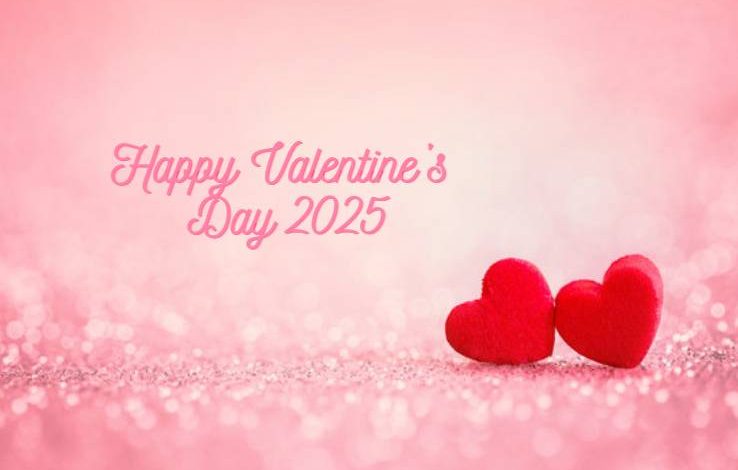Why we celebrate 14 February as Valentine’s day?

Valentine’s Day is synonymous with love, romance, and grand gestures, but have you ever wondered why February 14 is the date we celebrate? Beyond chocolate hearts and bouquets of roses lies a fascinating history that intertwines ancient traditions, religious accounts, and evolving cultural practices. This blog unravels the origins and significance of Valentine’s Day, shedding light on why February 14 is the chosen day for love.
The Historical Roots of Valentine’s Day
To understand why Valentine’s Day falls on February 14, we need to explore its beginnings—the blend of ancient Roman customs, Christian martyrdom, and the gradual evolution into the holiday we know today.
The Roman Festival of Lupercalia
Valentine’s Day’s earliest predecessor is believed to be Lupercalia, an ancient Roman festival held from February 13 to 15. This pagan celebration honored the Roman gods Lupercus and Faunus, and included fertility rites, purification rituals, and matchmaking activities. Young men and women were paired randomly, often paving the way for future relationships.
While it wasn’t explicitly about love in the modern sense, the timing of Lupercalia in mid-February possibly influenced the association of February 14 with romance and relationships.
The Tale of Saint Valentine
The most widely accepted origin of Valentine’s Day ties back to Saint Valentine, or rather, several St. Valentines in Christian history. The name Valentine (or Valentinus) was common in early Christianity, and the Catholic Church recognizes at least three martyrs by this name.
However, the legend most commonly linked to Valentine’s Day revolves around a priest named Valentine during the reign of Emperor Claudius II. It’s said that Claudius banned marriages for young men, believing single men made better soldiers. Priest Valentine rebelled by secretly marrying couples in defiance of the emperor’s orders. When he was discovered, Valentine was executed on February 14—historians estimate the year to be around AD 269.
Another version of the story suggests that Valentine fell in love with the jailer’s daughter while imprisoned and wrote her a letter signed, “From your Valentine,” before his death. This endearing phrase echoes in Valentine’s Day cards to this day.
While historical accuracy of these tales remains uncertain, the sentiment of love and faith attached to St. Valentine became central to the commemoration of Valentine’s Day.
When Valentine Became Romantic
The romantic association of Valentine’s Day was solidified centuries later, thanks to medieval notions of courtly love. By the 14th century, English poet Geoffrey Chaucer linked February 14 with love in his famous poem, Parliament of Fowls, written around 1382. Chaucer described February 14 as the day when birds chose their mates, symbolizing the beginning of spring and, by extension, romantic pairings.
Here’s an excerpt from Chaucer’s poem:
*”For this was sent on Saint Valentine’s day,
When every fowl cometh there to choose his mate.”*
This romantic imagery resonated deeply with 14th and 15th-century aristocrats, who began exchanging love letters and poems on this day.
How Did Modern Valentine’s Day Evolve?
Though February 14 became associated with romance during the Middle Ages, Valentine’s Day as we know it today didn’t fully take shape until centuries later.
The Rise of Valentine Cards
The 18th century saw the tradition of exchanging handmade Valentine’s Day cards flourish in Britain. By the 19th century, advances in printing technology allowed cards to become mass-produced and widely accessible. Valentine’s cards featuring heartfelt messages, lace decorations, and cherubs became wildly popular, particularly in Victorian England.
This custom crossed the Atlantic, and by the early 20th century, Americans embraced it wholeheartedly. Today, millions of cards are exchanged worldwide, with Valentine’s Day becoming one of the top card-sending holidays each year.
Enter Chocolate and Roses
Valentine’s Day gestures involving chocolates and flowers can largely be attributed to clever marketing. The industrial chocolate giant Cadbury introduced its heart-shaped box of chocolates in the 1860s, forever linking the sweet treat to the romantic holiday.
Likewise, red roses became a staple gift due to their longstanding association with love and passion in classical literature and art.
Beyond Romance
In its earliest days, Valentine’s Day was predominantly a romantic holiday, but its scope has expanded in recent years. Today, people celebrate love in all its forms—between family, friends, and even pets. February 14 is also celebrated differently across cultures. For example:
- Japan and South Korea have gender-specific traditions, where women give gifts on Valentine’s Day, while men reciprocate on White Day (March 14).
- Finland celebrates Ystävänpäivä, or “Friendship Day,” which honors platonic bonds as much as romantic ones.
Why February 14?
The precise reason February 14 became the designated day remains unclear. However, historians suggest a few likely explanations:
- Martyrdom of Saint Valentine: Valentine’s execution on February 14 is perhaps the clearest link to the holiday.
- Alignment with Lupercalia: The adoption of a Christian feast day during February may have coincided with the desire to replace the pagan festival of Lupercalia.
- Season of Love: February 14 lies in the transitional cusp toward spring, correlating with themes of fertility and renewal.
Valentine’s Day in Today’s World
For most people, February 14 is now a day to express love and affection through gifts, cards, and experiences. While it has grown increasingly commercialized, the day continues to hold personal meaning for millions globally.
Whether you’re celebrating with a romantic partner, gal pals (hello, Galentine’s Day!), or simply treating yourself, Valentine’s Day is a heartfelt reminder to cherish the relationships that matter most.
What You Can Do This Valentine’s Day
February 14 offers a chance to spread a little love—romantic or otherwise. Want to make the most of the day? Here are a few ideas:
- Write a thoughtful card or letter—it’s personal, meaningful, and always appreciated.
- Gift an experience instead of physical items, like a cooking class or a day at a spa, making lasting memories.
- Share Valentine’s traditions with friends or family; why not host a dinner or game night to celebrate together?
Above all, Valentine’s Day is a time to reflect on the importance of love in all its forms. Whether that’s celebrating your partner, your friendships, or even indulging in a little self-love, the day is yours to define.








